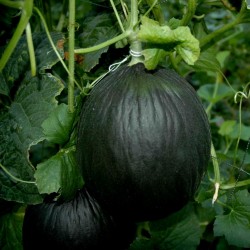Menu
-
MenuZpět
- Home
-
Kategorie
-
-
Kategorie
-
Zeleninová semínka
-
Odrůdy podle země
- Odrůdy z Arménie
- Odrůdy od BiH
- Odrůdy z Chorvatska
- Odrůdy z Francie
- Odrůdy z Německa
- Varieties from Greece
- Varieties from Hungary
- Odrůdy z Indie
- Varieties from Italy
- Odrůdy z Japonska
- Odrůdy ze Severní Makedonie
- Varieties from Peru
- Varieties from Russia
- Varieties from Serbia
- Odrůdy ze Slovinska
- Varieties from Spain
- Varieties from Thailand
- Odrůdy z Turecka
- Varieties from USA
- Semena rajčat
- Semena kukuřice
- Tykev rodina
- Rodina fazole
- Semena okurky
- Semena papriky
- Rodina mrkve
- Cibulová rodina
- Salátová semínka
- Rodina brambor
- Rodina zelí
- Semena ředkvičky
- Rodina z červené řepy
- Semena melounu
- Melounová semínka
- Semena květáku
- Slunečnicová rodina
-
Odrůdy podle země
- Ovocná semínka
- Chili semínka
- Semena léčivých bylin
- Semena horolezeckých rostlin
- Stromy - keř - semena
- Palmová semínka
- Semena okrasných trav
- Semena tabáku
-
Zeleninová semínka
-
-
-
-
- NOVÉ PRODUKTY
- Dodání - platba
- Vytvořit účet
- FAQ
- Domů
-
- Zeleninová semínka
- Odrůdy podle země
- Odrůdy ze Severní Makedonie
- Odrůdy z Chorvatska
- Odrůdy z Turecka
- Odrůdy od BiH
- Odrůdy z Japonska
- Odrůdy z Indie
- Odrůdy z Arménie
- Odrůdy z Francie
- Odrůdy ze Slovinska
- Varieties from Serbia
- Varieties from Greece
- Varieties from Russia
- Varieties from Italy
- Varieties from Spain
- Varieties from USA
- Odrůdy z Německa
- Varieties from Peru
- Varieties from Thailand
- Varieties from Hungary
- Semena květáku
- Melounová semínka
- Semena melounu
- Slunečnicová rodina
- Rodina z červené řepy
- Semena ředkvičky
- Semena rajčat
- Semena kukuřice
- Tykev rodina
- Rodina fazole
- Semena okurky
- Semena papriky
- Rodina zelí
- Rodina brambor
- Cibulová rodina
- Salátová semínka
- Rodina mrkve
- Odrůdy podle země
- Balení a tak
- Houbové mycelium
- Hlízy rostlin
- Organické koření
- Ájurvédské rostliny
- Hybridní semena F1
- Semena banánů
- Žádná platba přes PayPal a kartou X
- Semena obřích rostlin
- Rostliny odolné vůči chladu
- Bambusová semínka
- Formy na ovoce a zeleninu
- Velké balíčky semen
- Ovocná semínka
- Chili semínka
- Semena léčivých bylin
- Semena horolezeckých rostlin
- Stromy - keř - semena
- Palmová semínka
- Semena okrasných trav
- Semena tabáku
- Dodání - platba
- Pokyny pro setí
- Péče o rostliny
- Semena vodních rostlin
- Semena kaktusu
- Semena květin
- Zeleninová semínka
Last Product Reviews
These peppers came all the way from eastern Europe and took a while at no f...
By
 Fitim Berani on 21/09/2023
Fitim Berani on 21/09/2023
Verified Purchase
Last customers
- Tanja, Beograd, Serbia
- Alaa, Alwajh, Saudi Arabia
- ionescu, valu lui traian, Romania
- Lasse, 2900, Norway
- Pete, Cleves, United States
- Stef, Waalwijk, Netherlands
- Sonia, Minervino di Lecce, Italy
- Adrian, Ingolstadt, Germany
- CORINNE, NOTRE DAME DE LONDRES, France
- Dušan, KRAVANY NAD DUNAJOM, Slovakia
- Arno, Ehrenkirchen, Germany
- Costas, LARNACA , Cyprus
- Fulvio francesco, Santa Domenica Talao, Italy
- william, Dun, France
- Aymeric , Saint tricat, France
- Ricard, Sant Celoni, Spain
- Maureen , Enniscorthy Co Wexford , Ireland
- Paul, St. Vigil in Enneberg (BZ), Italy
- Ricardo jorge , Viseu , Portugal
- Radosav, Kragujevac, Serbia
- Sylvie, Neyruz, Switzerland
- Julien, Scionzier, France
- Zoran, Vinca, Serbia
- Josef, Hochdorf-Assenheim, Germany
- Davide, London, United Kingdom
- Kimberly, Victoria, Gozo, Malta
- Saša , Beograd, Serbia
- Ewa, Galway, Ireland
- Ioannis , Kato Achaia, Greece
- Samuele, Milano, Italy
Nejprodávanější
Počet produktů: 882
Zobrazení 325-336 z 882 položek
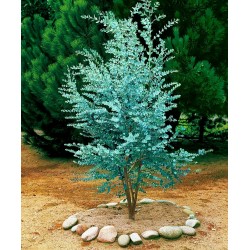
Seeds Eucalyptus Gunnii...
Cena
2,50 €
SKU: T 7
Seeds Gallery Com,
5/
5
<!DOCTYPE html>
<html>
<head>
<meta http-equiv="Content-Type" content="text/html; charset=UTF-8" />
</head>
<body>
<h2><span style="font-size: 14pt;"><strong>Seeds Eucalyptus Gunnii Cider Gum Tree</strong></span></h2>
<h2><span style="color: #ff0000; font-size: 14pt;"><strong>Price for Package of 10 seeds.</strong></span></h2>
<div>The magnificent Eucalyptus gunnii is one of the most popular hardy varieties of eucalyptus, which thrives in our climate. With silvery-blue, rounded young leaves that give way to long, glaucous, sickle-shaped adult foliage and smooth whitish-green bark that is shed annually in late summer to reveal greyish-green bark, sometimes flushed pink or orange. Although not often seen in the UK, it can bear beautiful creamy-white blooms when it flowers in summer.</div>
<div>Eucalyptus are naturally trees, sometimes reaching a great height, but in gardens regular firm annual pruning can keep them as large shrubs and maintain a supply of the juvenile foliage enjoyed by gardeners and flower arrangers. Ideal in a pot on the patio, it can be grown to form a standard tree and clipped regularly for a compact head of silver-blue foliage which produce a scented natural oil that will keep bugs and knats at bay.</div>
<div>This magnificent evergreen, fast growing specimen can grow up to 1m (36in) in the first year and once established, are hardy to -18°C (0°F). Easy to care for, it requires minimum attention.</div>
<div>Awarded the prestigious RHS Award of Garden Merit (AGM).</div>
<div>Sowing:</div>
<div>Germination: Indoors, lightly Cover with uncompacted soil Water well. Keep in a sunny position.</div>
<div>Contains seeds(black) and growth medium(brown).Use mixture: DON’T separate out seeds.</div>
<div>Sowing into containers:</div>
<div>Germination: Indoors, lightly Cover with uncompacted soil Water well. Keep in a sunny position.</div>
<div>Contains seeds(black) and growth medium(brown).Use mixture: DON’T separate out seeds.</div>
<div>, well drained and sterile compost. (John Innes or 50% multi-purpose and 50% perlite or coarse grit.). Cover with sieved compost or vermiculite. Provide bottom heat if possible. and cover pots with plastic or glass to retain moisture and humidity and protect the seed. Keep moist at all times.</div>
<div>When large enough to handle, transplant/prick out each seedling in its own pot of multi-purpose compost. Seedlings in shallow seed trays need transplanting promptly, handling them carefully by holding the seed leaves, rather than the emerging true adult leaves. Seedlings in root trainers can be left a little longer before transplanting, allowing their roots to fill the module, and then transplanting the whole plug of roots and compost in one go.</div>
<div>Cultivation:</div>
<div>Water regularly, as needed, and feed with liquid fertiliser every month, growing the seedlings on into small plants. The following spring or summer, when the plants are more robust, harden off for 10-14 days before planting out.</div>
<div>Plant them out into the garden in late summer to early autumn, giving them the winter to settle their roots into the soil before coming into active growth the following spring. Best grown in sunny sheltered spots. Cold winds are more injurious than frost.</div>
<div>Planting guide:</div>
<div>Water pot thoroughly and allow to drain. If planting in a lawn, remove a circle of turf 60cm (24in) across. Dig a hole twice the size of the pot and fork over the base, incorporating a handful of general fertiliser and a bucketful of planting compost. Drive in a tree stake a little off-centre. Remove the pot and tease out any matted roots. Position the tree against stake with top of root ball level with surrounding soil. Replace remaining soil, firming-in well. Secure tree to stake with adjustable strap. Water thoroughly, then once a week during the first growing season and during dry spells while the tree is establishing. Garden-grown specimens should not require regular feeding.</div>
<div>Container Specimens:</div>
<div>Grow in any good multi-purpose potting media or soil-based ones such as John Innes No 2 or No 3. Adding up to 30 percent by volume of coarse grit is often helpful. They benefit from monthly feeding with a balanced liquid fertiliser. Keep the compost moist during the growing season and reduce watering in winter. Repot every two years.</div>
<div>Pruning:</div>
<div>Requires minimal pruning if grown as a tree, removing any broken, diseased or crossing branches in late autumn or winter. For the best juvenile foliage, prune in early spring cutting back the stems to two or three buds above the base.</div>
<div>Plant uses:</div>
<div>Containers, Flower Arranging, Architectural, Sub-Tropical, Foliage Specimen.</div>
<div>Other Uses:</div>
<div>When crushed, the leaves produce a scented natural oil which is often used for cleaning and as a natural insecticide. Natural Dyes from the leaves & bark can give pretty colours, usually ranging from tan & yellow through to rust & red. It is also used for producing paper.</div>
<div>Nomenclature:</div>
<div>Eucalyptus (From Greek, meaning "well covered") is a diverse genus of trees (and a few shrubs), the members of which dominate the tree flora of Australia.</div>
<div>
<p>There are more than seven hundred species of Eucalyptus, mostly native to Australia, with a very small number found in adjacent parts of New Guinea and Indonesia and one as far north as the Philippines islands.</p>
</div>
<div>Many, but far from all, are known as gum trees in reference to the habit of many species to exude copious sap from any break in the bark (e.g. Scribbly Gum).</div>
<div>Flowers: July to October, white to cream, (not often seen in the UK)</div>
<div>Foliage: Fragrant, elliptic, grey-green horizontal branches</div>
<div>Height: 15-20m (15-20ft) if unpruned in 15-20 years. Broadly conical.</div>
<div>Spread: 8-12m (12-15ft) if unpruned in 15-20 years</div>
<div>Soil type: Prefers neutral to slightly acidic soil that doesn't dry out</div>
<div>Position: Full sun to part shade</div>
</body>
</html>
T 7

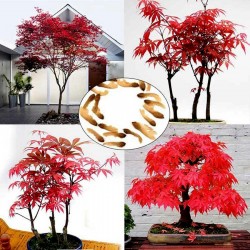
Japanese Red Maple Seeds...
Cena
1,95 €
SKU: T 2
Seeds Gallery Com,
5/
5
<h2><strong>Japanese Red Maple Seeds (Acer palmatum atropurpureum)</strong></h2>
<h2><span style="color:#ff0000;"><strong>Price for Package of 5 seeds.</strong></span></h2>
<p><span style="font-size:10pt;line-height:1.5em;">Japanese maple, Acer palmatum, is a deciduous shrub or small tree with a broad, rounded shape. Native to China, Korea and Japan, this lovely plant is greatly admired and is grown in temperate gardens and landscapes all over the world. This red 'ATTROPURPUREUM" variety is possibly even more beautiful than the standard and more commonly offered version and it is one of the most beautiful small trees for an ornamental landscape. It is perfectly suited as a specimen tree, an accent in a mixed border, or in a container on the patio. It anchors the Japanese style garden. </span></p>
<p>The brilliant autumn foliage lights up the garden, and the slender twigs and contorted branches provide winter interest. The canopy is wispy and delicate, and in some cultivars, weeping. The species usually stays about 4 to 6 m tall and wide, but can get larger under ideal conditions. It has slender, glabrous twigs and smooth gray bark. Branches tend to grow in horizontal layers, and often are contorted and twisted, and some specimens have more than one main trunk. The palmate leaves are 5-13 cm long and wide, and deeply dissected with 5 to 11 lobes. The lobes are lance shaped, sharply pointed at the tips and doubly toothed on the edges. Acer palmatum attropurpureum is famous for its autumn display when leaves turn brilliant shades of deep red. </p>
<p>It needs a fertile, well drained, acidic soil with filtered to full shade, the latter being best in warmer regions. It will take sub-tropical heat. Highly frost resistant it is not drought tolerant and needs regular watering.</p>
<p>Japanese maple will grow from seeds, and seedlings tend to be faster growing, stronger and more drought tolerant than cultivars.</p>
<div>
<table cellspacing="0" cellpadding="0" border="1"><tbody><tr><td colspan="2" width="100%" valign="top">
<p><span style="color:#008000;"><strong>Sowing Instructions</strong></span></p>
</td>
</tr><tr><td valign="top" nowrap="nowrap">
<p><span style="color:#008000;"><strong>Propagation:</strong></span></p>
</td>
<td valign="top">
<p><span style="color:#008000;">Seeds</span></p>
</td>
</tr><tr><td valign="top" nowrap="nowrap">
<p><span style="color:#008000;"><strong>Pretreat:</strong></span></p>
</td>
<td valign="top">
<p><span style="color:#008000;">0</span></p>
</td>
</tr><tr><td valign="top" nowrap="nowrap">
<p><span style="color:#008000;"><strong>Stratification:</strong></span></p>
</td>
<td valign="top">
<p><span style="color:#008000;">3-4 months in moist sowing mix at 2-5 ° C refrigerator</span></p>
</td>
</tr><tr><td valign="top" nowrap="nowrap">
<p><span style="color:#008000;"><strong>Sowing Time:</strong></span></p>
</td>
<td valign="top">
<p><span style="color:#008000;">all year round> Autumn / Winter preferred</span></p>
</td>
</tr><tr><td valign="top" nowrap="nowrap">
<p><span style="color:#008000;"><strong>Sowing Depth:</strong></span></p>
</td>
<td valign="top">
<p><span style="color:#008000;">1 cm</span></p>
</td>
</tr><tr><td valign="top" nowrap="nowrap">
<p><span style="color:#008000;"><strong>Sowing Mix:</strong></span></p>
</td>
<td valign="top">
<p><span style="color:#008000;">Coir or sowing mix + sand or perlite</span></p>
</td>
</tr><tr><td valign="top" nowrap="nowrap">
<p><span style="color:#008000;"><strong>Germination temperature:</strong></span></p>
</td>
<td valign="top">
<p><span style="color:#008000;">18-20 ° C</span></p>
</td>
</tr><tr><td valign="top" nowrap="nowrap">
<p><span style="color:#008000;"><strong>Location:</strong></span></p>
</td>
<td valign="top">
<p><span style="color:#008000;">bright + keep constantly moist not wet</span></p>
</td>
</tr><tr><td valign="top" nowrap="nowrap">
<p><span style="color:#008000;"><strong>Germination Time:</strong></span></p>
</td>
<td valign="top">
<p><span style="color:#008000;">3-6 weeks</span></p>
</td>
</tr><tr><td valign="top" nowrap="nowrap">
<p><span style="color:#008000;"><strong>Watering:</strong></span></p>
</td>
<td valign="top">
<p><span style="color:#008000;">Water regularly during the growing season</span></p>
</td>
</tr><tr><td valign="top" nowrap="nowrap">
<p><span style="color:#008000;"><strong> </strong></span></p>
</td>
<td valign="top">
<p><br /><span style="color:#008000;"><em>Copyright © 2012 Seeds Gallery - Saatgut Galerie - Galerija semena. </em><em>All Rights Reserved.</em><em></em></span></p>
</td>
</tr></tbody></table></div>
T 2


Green Rose Flower Seeds
Cena
2,50 €
SKU: F 4
Seeds Gallery Com,
5/
5
<h2><span style="font-size:14pt;"><strong>Green Rose Flower Seeds Lover's Gift</strong></span></h2>
<h2><span style="color:#ff0000;font-size:14pt;"><strong>Price for Package of 5 seeds.</strong></span></h2>
<div>
<p>Extremely beautiful and still rare Green Rose Seeds.</p>
</div>
<div>Roses are best known for their flowers. Roses are popular garden shrubs, as flowering shrubs. They are also grown as cut flowers, as one of the most popular and commonly sold florists' flowers. <span style="font-size:11px;line-height:1.5em;">A few roses are grown for scented foliage (such as Rosa rubiginosa, ornamental thorns, Rosa sericea or their ornamental fruit Rosa moyesii).</span></div>
<div>
<p>Rose hips are occasionally made into jam, jelly, and marmalade, or are brewed for tea, primarily for their high vitamin C content. They are also pressed and filtered to make rose hip syrup. Rose hips are also used to produce Rose hip seed oil, which is used in skin products and some makeup products.</p>
</div>
<div>The leaves of most species are 5–15 centimetres long, pinnate, with (3–) 5–9 (–13) leaflets and basal stipules; the leaflets usually have a serrated margin, and often a few small prickles on the underside of the stem. The vast majority of roses are deciduous but a few (particularly in South east Asia) are evergreen or nearly so.</div>
<div><strong>Symbolism</strong></div>
<div>The rose has always been valued for its beauty and has a long history of symbolism. Roses are ancient symbols of love and beauty. 'Rose' means pink or red in a variety of languages (such as Romance languages, Greek, and Polish). The rose was sacred to a number of goddesses (including Isis and Aphrodite), and is often used as a symbol of the Virgin Mary. The ancient Greeks and Romans identified the rose with their goddesses of love referred to as Aphrodite and Venus. In Rome a wild rose would be placed on the door of a room where secret or confidential matters were discussed. The phrase sub rosa, or "under the rose", means to keep a secret — derived from this ancient Roman practice.</div>
<div><strong>China</strong></div>
<div>The China roses, based on Rosa chinensis, were cultivated in East Asia for centuries and finally reached Western Europe in the late 1700s. They are the parents of many of today's hybrid roses, and they brought a change to the form of the flower. Compared with the aforementioned European rose classes, the Chinese roses had less fragrant, smaller blooms carried over twiggier, more cold-sensitive shrubs. Yet they possessed the amazing ability to bloom repeatedly throughout the summer and into late autumn, unlike their European counterparts. The flowers of China roses were also notable for their tendency to "suntan," or darken over time — unlike the blooms of European roses, which tended to fade after opening. This made them highly desirable for hybridisation purposes in the early 1800s. According to Graham Stuart Thomas, China Roses are the class upon which modern roses are built.[7] Today's exhibition rose owes its form to the China genes, and the China Roses also brought slender buds which unfurl when opening. Tradition holds that four "stud China" roses ('Slater's Crimson China' (1792), 'Parsons' Pink China' (1793), and the Tea roses 'Hume's Blush Tea-scented China' (1809) and 'Parks' Yellow Tea-Scented China' (1824)) were brought to Europe in the late eighteenth and early nineteenth centuries; in fact there were rather more, at least five Chinas not counting the Teas having been imported.[8] This brought about the creation of the first classes of repeat-flowering Old Garden Roses, and later the Modern Garden Roses. Examples: 'Old Blush China', 'Mutabilis' (Butterfly Rose), 'Cramoisie Superieur'.</div>
<div>① Put seeds into 40° C water for 24 hours.</div>
<div>② Put seeds into very wet sands for germination. ( Generally it take more than 40 days. )</div>
<div>③ Move it into soil after it sprouts.</div>
<div>Germination temperature: 20-25℃</div>
<div>Germination time: 40 days</div>
<div>Growth optimum temperature: 10-25 ℃</div>
<div>Spacing : 20 * 20cm</div>
<div>Rose on soil not ask for much, just with some humus soil aggregate</div>
<div>structure be good training as long as the following three links will make good growth: </div>
<div>Rose is afraid of:</div>
<div>① Rose is drought tolerant plants, but it is afraid floods. It is necessary use non-glazed bonsai pots of soil cultivation. The principle is "do not pour water on it when soil is not dry. Wet it completely when you pour water on soil."</div>
<div>② Lend a high concentration of fertilizer (especially fertilizers) will result in the death of local rot.</div>
<div>③ All plants need sunlight. Rose like sunshine too.</div>
<div>Note: </div>
<div>1. Please seeds stored in a cool, dry place. </div>
<div>2. The seed surface is 1-2 times the diameter of the seed.</div>
<div>3.Our seeds are very easy to cultivate and the survival rate is very high. </div>
<div>Cover seeds with preservative films,and then,piercing the films to make several holes. Keep seeds covered in the daytime and uncover it in the night. Take off the preservative films when the seeds are half-germinated. The plant will be in a state of dormancy in summer and the leaves will turn yellow. Begginers should better use sand to cultivate the seeds.although the seeds will grow slower in the sand,the plants will be the most vigorous in the future. If you tend to use other kind of soil, try to use the kind with good water permeability,for example,the clay would not be a good choice. The soil should be disinfected by microwave oven before been used. Pay attention:the surface of the soil not be too dry, which is very important. When watering,all the soil should be wetted and there is no need to water in a cloudy day. </div>
<div>The pot could be 6-8cm in depth,it be an earthen basin or a plastic one. The volume of the soil should keep a distance of 1-2cm from the rim of the pot.</div>
<div>
<div><strong>Scientific classification</strong></div>
<div>Kingdom: Plantae</div>
<div>(unranked): Angiosperms</div>
<div>(unranked): Eudicots</div>
<div>(unranked): Rosids</div>
<div>Order: Rosales</div>
<div>Family: Rosaceae</div>
<div>Subfamily: Rosoideae</div>
<div>Genus: Rosa</div>
</div>
F 4

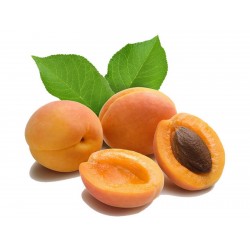
Manchurian Apricot Seeds...
Cena
4,50 €
SKU: V 56
Seeds Gallery Com,
5/
5
<h2><strong>Manchurian Apricot Seeds (Prunus armeniaca var. mandshurica)</strong></h2>
<h2><strong><span style="color:#ff0000;">Price for Package of 10 seeds.</span> </strong></h2>
<p>(The seeds are already stratified) Small fast-growing tree. Rounded, spreading form, winterhardy, and drought-resistant. Native to Manchuria and Korea. Attractive white flowers, golden-orange fall color, and edible fruit. Early flowering makes fruit production susceptible to spring frost damage. The largest tree in North Dakota is 26 feet tall with a canopy spread of 32 feet. Leaves and Buds Bud Arrangement - Alternate. Bud Color - Brownish. Bud Size - Small. Leaf Type and Shape - Simple, broad-ovate to broad elliptic. Leaf Margins - Sharply and doubly serrate, with narrow, elongated teeth.</p>
<div>Leaf Surface - Glossy, smooth above; axillary tufts of hairs, below. Leaf Length - 2 to 4½ inches. Leaf Width - 1½ to 3½ inches. Leaf Color - Light green on both surfaces; yellow to orange fall color. Flowers and Fruits Flower Type - Solitary, about 1 inch across. Flower Color - Varying from almost white to pink. Fruit Type - Subglobose, peach-like drupe, can be eaten but is best suited for preserves. Fruit Color - Fruits are yellow sometimes with a blush of red.</div>
<div>Form Growth Habit - Spreading. Texture - Medium, summer; medium, winter. Crown Height - 10 to 15 feet. Crown Width - 12 to 18 feet. Bark Color - Reddish-brown to cinnamon-brown. Root System - Medium in-depth, and spread. Environmental Requirements Soils Soil Texture - Grows best in loam soils. Soil pH - 6.0 to 7.5. Windbreak Suitability Group - 1, 3, 4, 4C, 5. Cold Hardiness USDA Zone 3. Water Moderately drought tolerant. Will not withstand ponding or saturated soils. Light Full sun. Uses Conservation/Windbreaks Small tree for farmstead windbreaks. Wildlife Nesting site for songbirds. Rabbits and other rodents can cause serious injury during winter. Agroforestry Products Food - Used fresh, processed and dried. Medicinal - A source of phloretin, an antibiotic. Used in cosmetics, soaps, and cold creams. Some Prunus species have been used for coughs, colds, gout and cancer research. Urban/Recreational</div>
<div>Used as a specimen or as a screen. Fruits may be objectionable if used as a boulevard tree. Cultivated Varieties Mandan Apricot (Prunus armeniaca var. mandshurica ‘Mandan’) - Released by USDA, Northern Great Plains Research Station, Mandan, North Dakota. A cultivar</div>
<div>seed strain. Moongold/Sungold Apricot (P. x ‘Moongold’ and ‘Sungold’) - Released by the University of Minnesota, St. Paul, Minnesota. Siberian Apricot (P. armeniaca var. sibirica) Related Species</div>
<div>American Plum (Prunus americana) Pests No major pest problems. Extracts of Prunus species are toxic to some insect pests</div>
<table cellspacing="0" cellpadding="0" border="1"><tbody><tr><td colspan="2" width="100%" valign="top">
<p><span style="color:#008000;"><strong>Sowing Instructions</strong></span></p>
</td>
</tr><tr><td valign="top" nowrap="nowrap">
<p><span style="color:#008000;"><strong>Propagation:</strong></span></p>
</td>
<td valign="top">
<p><span style="color:#008000;">Seeds</span></p>
</td>
</tr><tr><td valign="top" nowrap="nowrap">
<p><span style="color:#008000;"><strong>Pretreat:</strong></span></p>
</td>
<td valign="top">
<p><span style="color:#008000;">soak in water for 24 hours</span></p>
</td>
</tr><tr><td valign="top" nowrap="nowrap">
<p><span style="color:#008000;"><strong>Stratification:</strong></span></p>
</td>
<td valign="top">
<p><span style="color:#008000;">3 months in moist sowing mix at 2-5 ° C refrigerator</span></p>
</td>
</tr><tr><td valign="top" nowrap="nowrap">
<p><span style="color:#008000;"><strong>Sowing Time:</strong></span></p>
</td>
<td valign="top">
<p><span style="color:#008000;">all year round> Autumn / Winter preferred</span></p>
</td>
</tr><tr><td valign="top" nowrap="nowrap">
<p><span style="color:#008000;"><strong>Sowing Depth:</strong></span></p>
</td>
<td valign="top">
<p><span style="color:#008000;">1-1,5 cm</span></p>
</td>
</tr><tr><td valign="top" nowrap="nowrap">
<p><span style="color:#008000;"><strong>Sowing Mix:</strong></span></p>
</td>
<td valign="top">
<p><span style="color:#008000;">Coir or sowing mix + sand or perlite</span></p>
</td>
</tr><tr><td valign="top" nowrap="nowrap">
<p><span style="color:#008000;"><strong>Germination temperature:</strong></span></p>
</td>
<td valign="top">
<p><span style="color:#008000;">min. 20 ° C</span></p>
</td>
</tr><tr><td valign="top" nowrap="nowrap">
<p><span style="color:#008000;"><strong>Location:</strong></span></p>
</td>
<td valign="top">
<p><span style="color:#008000;">bright + keep constantly moist not wet</span></p>
</td>
</tr><tr><td valign="top" nowrap="nowrap">
<p><span style="color:#008000;"><strong>Germination Time:</strong></span></p>
</td>
<td valign="top">
<p><span style="color:#008000;">until it germinates </span></p>
</td>
</tr><tr><td valign="top" nowrap="nowrap">
<p><span style="color:#008000;"><strong>Watering:</strong></span></p>
</td>
<td valign="top">
<p><span style="color:#008000;">Water regularly during the growing season</span></p>
</td>
</tr><tr><td valign="top" nowrap="nowrap">
<p><span style="color:#008000;"><strong> </strong></span></p>
</td>
<td valign="top">
<p><br /><span style="color:#008000;"><em>Copyright © 2012 Seeds Gallery - Saatgut Galerie - Galerija semena. </em><em>All Rights Reserved.</em></span></p>
</td>
</tr></tbody></table>
V 56

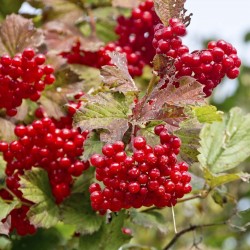
Semena brusinky americké...
Cena
2,45 €
SKU: V 52
Seeds Gallery Com,
5/
5
<!DOCTYPE html>
<html>
<head>
<meta http-equiv="Content-Type" content="text/html; charset=UTF-8" />
</head>
<body>
<h2><strong>Semena brusinky americké (Viburnum trilobum)</strong></h2>
<h2><span style="color: #ff0000;"><strong>Cena za balení 10 semen.</strong></span></h2>
<p>Odolný, přizpůsobivý, snadno se pěstuje, nápadné květiny, barva podzimu, nápadné jedlé ovoce, přitahuje ptáky a motýly, krmivo / přístřešek pro divoké zvěře, hranice živých plotů a keřů, bonsaje, chlad, teplo, sucho a vítr.</p>
<p>American Highbush Cranberry nesouvisí se skutečnými brusinkami; název pochází z jeho koláče, jedlých červených plodů.</p>
<p>Americká Highbush Cranberry pochází z bažinatých lesů, bažin, okrajů jezer, pastvin, houštin, svahů a vlhkých nízkých míst od New Brunswicku po Britskou Kolumbii na jih až po New York, Velká jezera, Jižní Dakota a Oregon. Je to opadavý keř se zaobleným, vzpřímeně se rozkládajícím a někdy klenutým zvykem. Obvykle roste na 10 až 15 stop vysoký. Listy jsou trojlaločné, javorové, lesklé, tmavě zelené, na podzim se stávají atraktivní žlutě červenou nebo červenofialovou. Na jaře má vnější kroužek ze 3/4 palců bílých sterilních květů obklopujících úrodné, ale nenápadné vnitřní květy, ve 3palcovém shluku s plochým vrcholem. Po květinách následují na podzim klesající shluky brusinkovitých jasně červených 1/4 palců jedlých bobulí (peckovice). Bobule jsou čerstvé čerstvé keře a jsou mnohem méně hořké než bobule nalezené na Viburnum opulus.</p>
<p>Bobule se někdy používají k výrobě džemů a želé.</p>
</body>
</html>
V 52 (10 S)

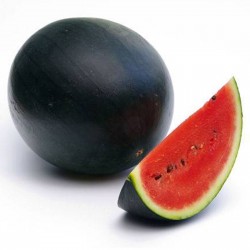
Black Sweet Watermelon Seeds
Cena
2,50 €
SKU: V 134 B
Seeds Gallery Com,
5/
5
<h2 class=""><strong>Black Sweet Watermelon Seeds</strong></h2>
<h2><span style="color: #ff0000;" class=""><strong>Price for Package of 25 (1g) seeds.</strong></span></h2>
<div>The finest seeds through the finest seed selecting process with our leading technology to ensure the quality of the seeds with firm vigor, great disease tolerance as well as very high germination</div>
<div>Common Name: Black Sweet Watermelon Seeds</div>
<div>Scientific Name: Citrullus vulgaris Schrad</div>
<div>Soil: Any soil</div>
<div>Water: morning and evening</div>
<div>Fertilizer: 15-15-15</div>
<div>Harvest: - days</div>
<div>
<p>% Purity : 100</p>
</div>
<div>% Germ.: 89</div><script src="//cdn.public.n1ed.com/G3OMDFLT/widgets.js"></script>
V 134 B (25 S)


Odrůda z Arménie
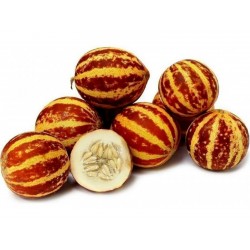
Semena tygřího melounu
Cena
4,95 €
SKU: V 46
Seeds Gallery Com,
5/
5
<meta http-equiv="Content-Type" content="text/html; charset=UTF-8" />
<h2><strong>Semena tygřího melounu</strong></h2>
<h2><span style="color: #ff0000;"><strong>Cena za balení 5 semen.</strong></span></h2>
<p>Vyznačuje se silnou a intenzivní exotickou chutí a vůní a je také velmi dekorativní. Plody malé velikosti váží 150-450 g. Rostliny tygřího melounu mohou na vinici přinést až dvacet melounů. Nejúžasnější meloun, který jsme vyrostli.</p>
<p>Hladká kůra tygřích melounů má vertikální variace rezavě oranžové a žluté. Krémová, bělavá dužina melounu je šťavnatá a sladká s chutí srovnatelnou s chutí asijské hrušky a melounu. Jako většina druhů muškátu nabízí vysoce aromatickou vůni a je známo, že parfémuje celou místnost, ve které se nacházejí, když je na vrcholu zralosti. Tygří melouny dorostou přibližně do velikosti softballu a po úplném dospělosti budou vážit skromnou libru.</p>
<p>Tiggerův meloun byl původně objeven ve starověké západní Arménii poblíž řeky Tigris. Jako většina odrůd melounů preferuje teplé až horké letní dny v mírných a středomořských oblastech. Pěstování na popínavých vinných révách je díky malé velikosti melounu Tigger ideální pro treling, který umožňuje pěstování v relativně malých prostorech.</p>
V 46 (5 S)

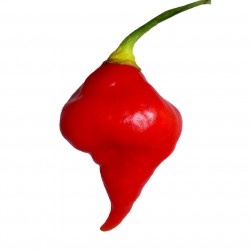
Habanero Kreole Seeds
Cena
2,00 €
SKU: C 15
Seeds Gallery Com,
5/
5
<h2><span style="text-decoration:underline;"><em><strong>Habanero Kreole Seeds (C.chinense)</strong></em></span></h2><h3><span style="color:#ff0000;"><strong>Price for Package of 10 or 100 seeds.<br /></strong></span></h3><div>Very compact, densely foliaged plants bear an abundance of bright Red , thin-skinned hot peppers that are shaped like a like a lantern. Interesting shape and spicy taste make this pepper good to eat fresh, pickle, or use as a garnish. 95 days. 150.000-350.000 HSU</div><p><strong><a href="http://www.youtube.com/watch/?v=JVFsnvVvqW4" target="_blank" rel="noreferrer noopener">http://www.youtube.com/watch?v=JVFsnvVvqW4</a></strong></p>
C 15


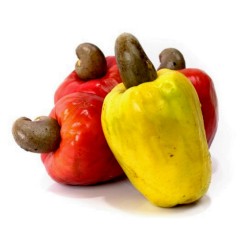
Cashew Nut Seeds Cashew...
Cena
3,45 €
SKU: V 33
Seeds Gallery Com,
5/
5
<!DOCTYPE html>
<html>
<head>
<meta http-equiv="Content-Type" content="text/html; charset=UTF-8" />
</head>
<body>
<h2><strong><strong>Cashew Nut Seeds Cashew Apple (Anacardium occidentale)</strong><br /></strong></h2>
<h2><span style="color: #ff0000;"><strong>Price for Package of 1 seeds.</strong></span></h2>
<div>
<p>The<span> </span><b>cashew tree</b><span> </span>(<i>Anacardium occidentale</i>) is a tropical evergreen tree that produces the cashew<span> </span>seed<span> </span>and the cashew<span> </span>apple.<span> </span>It can grow as high as 14 m (46 ft), but the dwarf cashew, growing up to 6 m (20 ft), has proved more profitable, with earlier maturity and higher yields.</p>
<p>The species is native to<span> </span>Central America, the<span> </span>Caribbean Islands, and<span> </span>northern South America.<span> </span>Portuguese colonists in Brazil began exporting cashew nuts as early as the 1550s.<span> </span>In 2017,<span> </span>Vietnam,<span> </span>India, and<span> </span>Ivory Coast<span> </span>were the major producers.</p>
<p>The cashew seed, often simply called a cashew, is widely consumed. It is eaten on its own, used in recipes, or processed into cashew cheese or<span> </span>cashew butter. The shell of the cashew seed yields derivatives that can be used in many applications including lubricants, waterproofing, paints, and arms production, starting in World War II.<span> </span>The cashew apple is a light reddish to yellow fruit, whose pulp can be processed into a sweet,<span> </span>astringent<span> </span>fruit drink or distilled into liquor.</p>
<h2><span class="mw-headline" id="Etymology">Etymology</span></h2>
<p>Its English name derives from the Portuguese name for the fruit of the cashew tree<span> </span><i>caju</i><span> </span>(Portuguese pronunciation: [kaˈʒu]), which itself is derived from the<span> </span>Tupian<span> </span>word<span> </span><i>acajú</i>, literally meaning "nut that produces itself".<sup id="cite_ref-morton_1-2" class="reference">[1]</sup>The generic name "Anacardium" (derived from Greek ἀνά (aná), meaning "outside," and καρδία (kardía), meaning "heart", refers to the unusual location of the seed (the heart) outside of the fruit.</p>
<h2><span class="mw-headline" id="Habitat_and_growth">Habitat and growth</span></h2>
<div class="thumb tright">
<div class="thumbinner"><img alt="" src="https://upload.wikimedia.org/wikipedia/commons/thumb/d/d5/Cashew_Flower.JPG/200px-Cashew_Flower.JPG" width="200" height="150" class="thumbimage" />
<div class="thumbcaption">
<div class="magnify"></div>
Flower of cashew tree</div>
</div>
</div>
<div class="thumb tright">
<div class="thumbinner"><img alt="" src="https://upload.wikimedia.org/wikipedia/commons/thumb/3/34/Cajueiro_Meconta.jpg/200px-Cajueiro_Meconta.jpg" width="200" height="133" class="thumbimage" />
<div class="thumbcaption">
<div class="magnify"></div>
Cashew tree</div>
</div>
</div>
<p>The cashew tree is large and<span> </span>evergreen, growing to 14 m (46 ft) tall, with a short, often irregularly shaped trunk. The<span> </span>leaves<span> </span>are spirally arranged, leathery textured, elliptic to obovate, 4–22 cm (1.6–8.7 in) long and 2–15 cm (0.79–5.91 in) broad, with smooth margins. The<span> </span>flowers<span> </span>are produced in a<span> </span>panicle<span> </span>or<span> </span>corymb<span> </span>up to 26 cm (10 in) long; each flower is small, pale green at first, then turning reddish, with five slender, acute<span> </span>petals<span> </span>7–15 mm (0.28–0.59 in) long.<span> </span>The largest cashew tree in the world<span> </span>covers an area around 7,500 m<sup>2</sup>(81,000 sq ft); it is located in<span> </span>Natal, Rio Grande do Norte, Brazil.</p>
<p>The fruit of the cashew tree is an<span> </span>accessory fruit<span> </span>(sometimes called a pseudocarp or false fruit).<sup id="cite_ref-morton_1-3" class="reference">[1]</sup><span> </span>What appears to be the fruit is an oval or<span> </span>pear-shaped<span> </span>structure, a<span> </span>hypocarpium, that develops from the<span> </span>pedicel<span> </span>and the receptacle of the cashew flower.<sup id="cite_ref-5" class="reference">[5]</sup><span> </span>Called the cashew apple, better known in Central America as<span> </span><i>marañón</i>, it ripens into a yellow or red structure about 5–11 cm (2.0–4.3 in) long. It is edible and has a strong "sweet" smell and taste.<sup class="noprint Inline-Template Template-Fact">[<i><span title="This claim needs references to reliable sources. (March 2018)">citation needed</span></i>]</sup></p>
<p>The true fruit of the cashew tree is a kidney or boxing-glove shaped<span> </span>drupe<span> </span>that grows at the end of the cashew apple. The drupe develops first on the tree, and then the pedicel expands to become the cashew apple.<sup id="cite_ref-morton_1-4" class="reference">[1]</sup><span> </span>Within the true fruit is a single<span> </span>seed, which is often considered a<span> </span>nut, in the culinary sense. The seed is surrounded by a double shell containing an allergenic<span> </span>phenolic<span> </span>resin,<span> </span>anacardic acid, a potent skin<span> </span>irritant<span> </span>chemically related to the better-known allergenic oil<span> </span>urushiol<span> </span>which is also a<span> </span>toxin<span> </span>found in the related<span> </span>poison ivy. Some people are<span> </span>allergic<span> </span>to cashews, but cashews are a less frequent<span> </span>allergen<span> </span>than tree nuts or<span> </span>peanuts.<sup id="cite_ref-Rosen_6-0" class="reference">[6]</sup></p>
<p>While the cashew plant is native to northeast<span> </span>Brazil, the<span> </span>Portuguese<span> </span>took it to<span> </span>Goa, India, between 1560 and 1565. From there, it spread throughout Southeast Asia and eventually Africa.</p>
<h2><span class="mw-headline" id="Cashew_nut_and_shell">Cashew nut and shell</span></h2>
<div class="thumb tright">
<div class="thumbinner"><img alt="" src="https://upload.wikimedia.org/wikipedia/commons/thumb/1/16/Shelling_cashews.jpg/220px-Shelling_cashews.jpg" width="220" height="165" class="thumbimage" />
<div class="thumbcaption">
<div class="magnify"></div>
A woman uses a machine to shell cashews in Phuket, Thailand.</div>
</div>
</div>
<div class="thumb tright">
<div class="thumbinner"><img alt="" src="https://upload.wikimedia.org/wikipedia/commons/thumb/3/3c/CashewSnack.jpg/220px-CashewSnack.jpg" width="220" height="165" class="thumbimage" />
<div class="thumbcaption">
<div class="magnify"></div>
Cashews as a snack</div>
</div>
</div>
<p>Culinary uses for cashew seeds in<span> </span>snacking<span> </span>and cooking are similar to those for all tree seeds called nuts.</p>
<p>Cashews are commonly used in<span> </span>Indian cuisine<span> </span>and<span> </span>Pakistani cuisine, whole for garnishing sweets or curries, or ground into a paste that forms a base of sauces for curries (e.g.,<span> </span><i>korma</i>), or some sweets (e.g.,<span> </span><i>kaju barfi</i>). It is also used in powdered form in the preparation of several Indian sweets and desserts. In<span> </span>Goan cuisine, both roasted and raw kernels are used whole for making curries and sweets. Cashews are also used in<span> </span>Thai<span> </span>and<span> </span>Chinese cuisines, generally in whole form. In the Philippines, cashew is a known product of<span> </span>Antipolo, and is eaten with<span> </span><i>suman</i>. The province of<span> </span>Pampanga<span> </span>also has a sweet dessert called<span> </span><i>turrones de casuy</i>, which is cashew<span> </span>marzipan<span> </span>wrapped in white wafers. In<span> </span>Indonesia, roasted and salted cashews are called<span> </span><i>kacang mete</i><span> </span>or<span> </span><i>kacang mede</i>, while the cashew apple is called<span> </span><i>jambu monyet</i><span> </span>(translates in English to monkey rose apple).</p>
<p>In the 21st century, cashew cultivation increased in several African countries to meet the demands for manufacturing<span> </span>cashew milk, a<span> </span>plant milk<span> </span>alternative to<span> </span>dairy milk.<sup id="cite_ref-7" class="reference">[7]</sup><span> </span>In<span> </span>Mozambique,<span> </span><i>bolo polana</i><span> </span>is a cake prepared using powdered cashews and mashed potatoes as the main ingredients. This dessert is popular in South Africa.<sup id="cite_ref-8" class="reference">[8]</sup></p>
<p>In<span> </span>Brazil, cashew fruit juice and the fruit pulp are used in the production of sweets, juice, alcoholic beverages, such as<span> </span><i>cachaça</i>, and as a flour, milk or cheese.<sup id="cite_ref-9" class="reference">[9]</sup><span> </span>In<span> </span>Panama, the cashew fruit is cooked with water and sugar for a prolonged time to make a sweet, brown, paste-like dessert called<span> </span><i>dulce de marañón</i>, with<span> </span><i>marañón</i><span> </span>as a Spanish name for cashew.<sup class="noprint Inline-Template Template-Fact">[<i><span title="This claim needs references to reliable sources. (November 2018)">citation needed</span></i>]</sup></p>
<p>The<span> </span>shell<span> </span>of the cashew nut contains oil compounds which may cause<span> </span>contact dermatitis<span> </span>similar in severity to that of poison ivy, primarily resulting from the<span> </span>phenolic lipids,<span> </span>anacardic acid, and<span> </span>cardanol.<sup id="cite_ref-10" class="reference">[10]</sup><span> </span>Due to the possible dermatitis, cashews are typically not sold in the shell to consumers.<sup id="cite_ref-11" class="reference">[11]</sup><span> </span>Readily and inexpensively extracted from the waste shells, cardanol is under research for its potential applications in<span> </span>nanomaterials<span> </span>and<span> </span>biotechnology.<sup id="cite_ref-hamad_12-0" class="reference">[12]</sup></p>
<h2><span class="mw-headline" id="Production">Production</span></h2>
<table class="wikitable">
<tbody>
<tr>
<th colspan="2">Cashew production (kernels), 2017</th>
</tr>
<tr>
<td><center>Country</center></td>
<td><center>Production<br /><small>(tonnes)</small></center></td>
</tr>
<tr>
<td><center><span class="flagicon"><img alt="" src="https://upload.wikimedia.org/wikipedia/commons/thumb/2/21/Flag_of_Vietnam.svg/23px-Flag_of_Vietnam.svg.png" width="23" height="15" class="thumbborder" /> </span>Vietnam</center></td>
<td><center>863,060</center></td>
</tr>
<tr>
<td><center><span class="flagicon"><img alt="" src="https://upload.wikimedia.org/wikipedia/en/thumb/4/41/Flag_of_India.svg/23px-Flag_of_India.svg.png" width="23" height="15" class="thumbborder" /> </span>India</center></td>
<td><center>745,000</center></td>
</tr>
<tr>
<td><center><span class="flagicon"><img alt="" src="https://upload.wikimedia.org/wikipedia/commons/thumb/f/fe/Flag_of_C%C3%B4te_d%27Ivoire.svg/23px-Flag_of_C%C3%B4te_d%27Ivoire.svg.png" width="23" height="15" class="thumbborder" /> </span>Côte d'Ivoire</center></td>
<td><center>711,000</center></td>
</tr>
<tr>
<td><center><span class="flagicon"><img alt="" src="https://upload.wikimedia.org/wikipedia/commons/thumb/9/99/Flag_of_the_Philippines.svg/23px-Flag_of_the_Philippines.svg.png" width="23" height="12" class="thumbborder" /> </span>Philippines</center></td>
<td><center>222,541</center></td>
</tr>
<tr>
<th><center><b>World</b></center></th>
<th><center><b>3,971,046</b></center></th>
</tr>
<tr>
<td colspan="2"><small>Source:<span> </span>FAOSTAT<span> </span>of the<span> </span>United Nations<sup id="cite_ref-FAOSTAT_13-0" class="reference">[13]</sup></small></td>
</tr>
</tbody>
</table>
<p>In 2017, global production of cashew nuts (as the<span> </span>kernel) was 3,971,046<span> </span>tonnes, led by<span> </span>Vietnam,<span> </span>India<span> </span>and<span> </span>Côte d'Ivoire<span> </span>with 22%, 19%, and 18% of the world's total respectively (table).<span> </span>Benin,<span> </span>Guinea-Bissau,<span> </span>Tanzania,<span> </span>Mozambique,<span> </span>Indonesia, and<span> </span>Brazilalso had significant production of cashew kernels.</p>
<p>In 2014, rapid growth of cashew cultivation in<span> </span>Côte d'Ivoire<span> </span>made this country the top African exporter.<sup id="cite_ref-14" class="reference">[14]</sup><span> </span>Fluctuations in world market prices, poor working conditions, and low pay for local harvesting have caused discontent in the cashew nut industry.<sup id="cite_ref-15" class="reference">[15]</sup><sup id="cite_ref-16" class="reference">[16]</sup><sup id="cite_ref-17" class="reference">[17]</sup></p>
<p>The cashew tree is cultivated in the tropics between 25°N and 25°S, and is supremely adapted to hot lowland areas with a pronounced dry season, where the mango and tamarind trees also thrive.<sup id="cite_ref-18" class="reference">[18]</sup><span> </span>The traditional cashew tree is tall (up to 14 m) and takes three years from planting before it starts production, and eight years before economic harvests can begin. More recent breeds, such as the dwarf cashew trees, are up to 6 m tall, and start producing after the first year, with economic yields after three years. The cashew nut yields for the traditional tree are about 0.25 metric tons per hectare, in contrast to over a ton per hectare for the dwarf variety. Grafting and other modern tree management technologies are used to further improve and sustain cashew nut yields in commercial orchards.</p>
<h2><span class="mw-headline" id="Nutrition">Nutrition</span></h2>
<table class="infobox nowrap"><caption>Cashews, raw</caption>
<tbody>
<tr>
<th colspan="2">Nutritional value per 100 g (3.5 oz)</th>
</tr>
<tr>
<th scope="row">Energy</th>
<td>553 kcal (2,310 kJ)</td>
</tr>
<tr>
<td colspan="2"></td>
</tr>
<tr>
<th scope="row">
<div><b>Carbohydrates</b></div>
</th>
<td>
<div>30.19 g</div>
</td>
</tr>
<tr>
<th scope="row">Starch</th>
<td>23.49 g</td>
</tr>
<tr>
<th scope="row">Sugars
<div>lactose</div>
</th>
<td>5.91 g
<div>0.00 g</div>
</td>
</tr>
<tr>
<th scope="row">Dietary fiber</th>
<td>3.3 g</td>
</tr>
<tr>
<td colspan="2"></td>
</tr>
<tr>
<th scope="row">
<div><b>Fat</b></div>
</th>
<td>
<div>43.85 g</div>
</td>
</tr>
<tr>
<th scope="row">Saturated</th>
<td>7.783 g</td>
</tr>
<tr>
<th scope="row">Monounsaturated</th>
<td>23.797 g</td>
</tr>
<tr>
<th scope="row">Polyunsaturated</th>
<td>7.845 g</td>
</tr>
<tr>
<td colspan="2"></td>
</tr>
<tr>
<th scope="row">
<div><b>Protein</b></div>
</th>
<td>
<div>18.22 g</div>
</td>
</tr>
<tr>
<td colspan="2"></td>
</tr>
<tr>
<th scope="row"><b>Vitamins</b></th>
<td><b>Quantity</b><span><abbr title="Percentage of Daily Value"><b>%DV</b></abbr><sup>†</sup></span></td>
</tr>
<tr>
<th scope="row">Vitamin A</th>
<td>0 IU</td>
</tr>
<tr>
<th scope="row">Thiamine<span> </span><span>(B1)</span></th>
<td>
<div>37%</div>
0.423 mg</td>
</tr>
<tr>
<th scope="row">Riboflavin<span> </span><span>(B2)</span></th>
<td>
<div>5%</div>
0.058 mg</td>
</tr>
<tr>
<th scope="row">Niacin<span> </span><span>(B3)</span></th>
<td>
<div>7%</div>
1.062 mg</td>
</tr>
<tr>
<th scope="row">Pantothenic acid<span> </span><span>(B5)</span></th>
<td>
<div>17%</div>
0.86 mg</td>
</tr>
<tr>
<th scope="row">Vitamin B<span>6</span></th>
<td>
<div>32%</div>
0.417 mg</td>
</tr>
<tr>
<th scope="row">Folate<span> </span><span>(B9)</span></th>
<td>
<div>6%</div>
25 μg</td>
</tr>
<tr>
<th scope="row">Vitamin B<span>12</span></th>
<td>
<div>0%</div>
0 μg</td>
</tr>
<tr>
<th scope="row">Vitamin C</th>
<td>
<div>1%</div>
0.5 mg</td>
</tr>
<tr>
<th scope="row">Vitamin D</th>
<td>
<div>0%</div>
0 μg</td>
</tr>
<tr>
<th scope="row">Vitamin E</th>
<td>
<div>6%</div>
0.90 mg</td>
</tr>
<tr>
<th scope="row">Vitamin K</th>
<td>
<div>32%</div>
34.1 μg</td>
</tr>
<tr>
<td colspan="2"></td>
</tr>
<tr>
<th scope="row"><b>Minerals</b></th>
<td><b>Quantity</b><span><abbr title="Percentage of Daily Value"><b>%DV</b></abbr><sup>†</sup></span></td>
</tr>
<tr>
<th scope="row">Calcium</th>
<td>
<div>4%</div>
37 mg</td>
</tr>
<tr>
<th scope="row">Copper</th>
<td>
<div>110%</div>
2.2 mg</td>
</tr>
<tr>
<th scope="row">Iron</th>
<td>
<div>51%</div>
6.68 mg</td>
</tr>
<tr>
<th scope="row">Magnesium</th>
<td>
<div>82%</div>
292 mg</td>
</tr>
<tr>
<th scope="row">Manganese</th>
<td>
<div>79%</div>
1.66 mg</td>
</tr>
<tr>
<th scope="row">Phosphorus</th>
<td>
<div>85%</div>
593 mg</td>
</tr>
<tr>
<th scope="row">Potassium</th>
<td>
<div>14%</div>
660 mg</td>
</tr>
<tr>
<th scope="row">Selenium</th>
<td>
<div>28%</div>
19.9 μg</td>
</tr>
<tr>
<th scope="row">Sodium</th>
<td>
<div>1%</div>
12 mg</td>
</tr>
<tr>
<th scope="row">Zinc</th>
<td>
<div>61%</div>
5.78 mg</td>
</tr>
<tr>
<td colspan="2"></td>
</tr>
<tr>
<th scope="row"><b>Other constituents</b></th>
<td><b>Quantity</b></td>
</tr>
<tr>
<th scope="row">Water</th>
<td>5.20 g</td>
</tr>
<tr>
<td colspan="2"><hr />
<div class="wrap">Link to USDA Database entry</div>
</td>
</tr>
<tr>
<td colspan="2">
<div class="plainlist">
<ul>
<li>Units</li>
<li>μg =<span> </span>micrograms • mg =<span> </span>milligrams</li>
<li>IU =<span> </span>International units</li>
</ul>
</div>
</td>
</tr>
<tr>
<td colspan="2" class="wrap"><sup>†</sup>Percentages are roughly approximated using<span> </span>US recommendations<span> </span>for adults.<span> </span><br /><span class="nowrap"><span>Source: USDA Nutrient Database</span></span></td>
</tr>
</tbody>
</table>
<p>In a 100-gram serving, raw cashews provide 553<span> </span>Calories, 67% of the<span> </span>Daily Value<span> </span>(DV) in total fats, 36% DV of<span> </span>protein, 13% DV of<span> </span>dietary fiber<span> </span>and 11% DV of<span> </span>carbohydrates(table).<sup id="cite_ref-USDA_19-0" class="reference">[19]</sup><span> </span>Cashews are rich sources (> 19% DV) of<span> </span>dietary minerals, including particularly copper,<span> </span>manganese,<span> </span>phosphorus, and<span> </span>magnesium<span> </span>(79-110% DV), and of<span> </span>thiamin,<span> </span>vitamin B<sub>6</sub><span> </span>and<span> </span>vitamin K<span> </span>(32-37% DV) (table).<sup id="cite_ref-USDA_19-1" class="reference">[19]</sup><span> </span>Iron,<span> </span>potassium,<span> </span>zinc, and<span> </span>selenium<span> </span>are present in significant content (14-61% DV) (table).<sup id="cite_ref-USDA_19-2" class="reference">[19]</sup><span> </span>Cashews (100 grams, raw) contain 113 milligrams (1.74 gr) of<span> </span>beta-sitosterol.<sup id="cite_ref-USDA_19-3" class="reference">[19]</sup></p>
<h3><span class="mw-headline" id="Allergy">Allergy</span></h3>
<p>For some 6% of people, cashews can lead to complications or<span> </span>allergic reactions<sup id="cite_ref-allen_20-0" class="reference">[20]</sup><sup id="cite_ref-eu_21-0" class="reference">[21]</sup><sup id="cite_ref-22" class="reference">[22]</sup><span> </span>which may be life-threatening.<sup id="cite_ref-eu_21-1" class="reference">[21]</sup><span> </span>These allergies are triggered by the proteins found in tree nuts, and cooking often does not remove or change these proteins. Reactions to cashew and tree nuts can also occur as a consequence of hidden nut ingredients or traces of nuts that may inadvertently be introduced during food processing, handling, or manufacturing, particularly in people of European descent.<sup id="cite_ref-allen_20-1" class="reference">[20]</sup><sup id="cite_ref-eu_21-2" class="reference">[21]</sup></p>
<h2><span class="mw-headline" id="Cashew_oil">Cashew oil</span></h2>
<p>Cashew oil is a dark yellow oil for cooking or salad dressing pressed from cashew nuts (typically broken chunks created during processing). This may be produced from a single cold pressing.<sup id="cite_ref-23" class="reference">[23]</sup></p>
<h3><span class="mw-headline" id="Cashew_shell_oil">Cashew shell oil</span></h3>
<div class="hatnote navigation-not-searchable">See also:<span> </span>Urushiol</div>
<p>Cashew nutshell liquid (CNSL) or cashew shell oil (CAS registry number<span> </span>8007-24-7) is a natural<span> </span>resin<span> </span>with a yellowish sheen found in the<span> </span>honeycomb structure<span> </span>of the cashew<span> </span>nutshell, and is a byproduct of processing cashew nuts. It is a raw material of multiple uses in developing drugs, antioxidants, fungicides, and<span> </span>biomaterials.<sup id="cite_ref-hamad_12-1" class="reference">[12]</sup><span> </span>It is used in tropical<span> </span>folk medicine<span> </span>and for antitermite<span> </span>treatment of timber.<sup id="cite_ref-clay_24-0" class="reference">[24]</sup><span> </span>Its composition varies depending on how it is processed.</p>
<ul>
<li>Cold,<span> </span>solvent-extracted<span> </span>CNSL is mostly composed of<span> </span>anacardic acids<span> </span>(70%),<sup id="cite_ref-cen_25-0" class="reference">[25]</sup><span> </span>cardol<span> </span>(18%) and<span> </span>cardanol<span> </span>(5%).<sup id="cite_ref-hamad_12-2" class="reference">[12]</sup><sup id="cite_ref-epa_26-0" class="reference">[26]</sup></li>
<li>Heating CNSL<span> </span>decarboxylates<span> </span>the anacardic acids, producing a technical grade of CNSL that is rich in cardanol.<span> </span>Distillation<span> </span>of this material gives distilled, technical CNSL containing 78% cardanol and 8% cardol (cardol has one more<span> </span>hydroxyl<span> </span>group than cardanol).<sup id="cite_ref-epa_26-1" class="reference">[26]</sup><span> </span>This process also reduces the degree of thermal<span> </span>polymerization<span> </span>of the unsaturated alkyl-phenols present in CNSL.</li>
<li>Anacardic acid is also used in the chemical industry for the production of cardanol, which is used for resins, coatings, and frictional materials.<sup id="cite_ref-cen_25-1" class="reference">[25]</sup><sup id="cite_ref-epa_26-2" class="reference">[26]</sup></li>
</ul>
<p>These substances are skin allergens, like the oils of poison ivy, and present danger during manual cashew processing.<sup id="cite_ref-clay_24-1" class="reference">[24]</sup></p>
<p>This natural oil phenol has been found to have interesting chemical structural features which enable a range of chemical modifications to create a wide spectrum of biobased<span> </span>monomers<span> </span>capitalizing on the chemically versatile construct, containing three different<span> </span>functional groups: the<span> </span>aromatic ring, the<span> </span>hydroxyl group, and the<span> </span>double bonds<span> </span>in the flanking<span> </span>alkyl<span> </span>chain. These can be split into key groups, used as<span> </span>polyols, which have recently seen a dramatic increase in demand for their biobased origin and key chemical attributes such as high reactivity, range of functionalities, reduction in blowing agents, and naturally occurring fire retardant properties in the field of ridged polyurethanes aided by their inherent phenolic structure and larger number of reactive units per unit mass.<sup id="cite_ref-hamad_12-3" class="reference">[12]</sup></p>
<p>CNSL may be used as a resin for<span> </span>carbon composite<span> </span>products.<sup id="cite_ref-27" class="reference">[27]</sup><span> </span>CNSL-based<span> </span>Novolac<span> </span>is another versatile industrial monomer deriving from cardanol typically used as a<span> </span>reticulating<span> </span>agent for<span> </span>epoxy<span> </span>matrices in<span> </span>composite<span> </span>applications providing good thermal and mechanical properties to the final composite material.</p>
<h2><span class="mw-headline" id="Cashew_apple">Cashew apple</span></h2>
The cashew apple, also called cashew fruit, is the fleshy part of the cashew fruit attached to the cashew nut.<sup id="cite_ref-morton_1-5" class="reference">[1]</sup><span> </span>The top end of the cashew apple is attached to the stem that comes off the tree. The bottom end of the cashew apple attaches to the cashew nut, which is encased in a shell. In botanical terms, the cashew apple is an<span> </span>accessory fruit<span> </span>that grows on the cashew seed (which is the nut).
<p>The cashew apple can be eaten fresh, cooked in curries, or fermented into vinegar, as well as an alcoholic drink. It is also used to make preserves, chutneys, and jams in some countries such as India and Brazil. In many countries, particularly in South America, the cashew apple is used to flavor drinks, both alcoholic and nonalcoholic.<sup id="cite_ref-morton_1-6" class="reference">[1]</sup></p>
<p>Cashew nuts are more widely traded than cashew apples, because the apple, unlike the nut, is easily bruised and has very limited shelf life.<sup id="cite_ref-:0_28-0" class="reference">[28]</sup><span> </span>Cashew apple juice, however, may be used for manufacturing blended juices.<sup id="cite_ref-:0_28-1" class="reference">[28]</sup></p>
<p>In cultures that consume cashew apples its<span> </span>astringency<span> </span>is sometimes removed by steaming the fruit for five minutes before washing it in cold water; alternatively, boiling the fruit in salt water for five minutes or soaking it in gelatin solution also reduces the astringency.<sup id="cite_ref-29" class="reference">[29]</sup></p>
<h3><span class="mw-headline" id="Alcohol">Alcohol</span></h3>
<p>In<span> </span>Goa, the cashew apple is mashed and the juice extracted and kept for fermentation for a few days. Fermented juice then undergoes a double distillation process. The resulting beverage is called<span> </span><i>feni</i><span> </span>or fenny.<span> </span><i>Feni</i><span> </span>is about 40–42% alcohol. The single-distilled version is called<span> </span><i>urrac</i>, which is about 15% alcohol.</p>
<p>In the southern region of<span> </span>Mtwara,<span> </span>Tanzania, the cashew apple (<i>bibo</i><span> </span>in<span> </span>Swahili) is dried and saved. Later, it is reconstituted with water and fermented, then distilled to make a strong liquor often referred to by the generic name,<span> </span><i>gongo</i>.</p>
<p>In Mozambique, cashew farmers commonly make a strong liquor from the cashew apple. It is known under various names in the local languages of Mozambique (muchekele in Emakua spoken in the North, xicadju in Changana spoken in the South). In contrast to the above-mentioned Feni of Goa, the cashew liquor made in Mozambique does not involve the extraction of the juice from the cashew apples. Following harvest and the removal of the nuts, the apples are spread on the ground under trees and courtyards and allowed to lose water and ferment. The shrivelled fruits are then used for distillation.</p>
<p>According to one source,<sup id="cite_ref-Ref_to_Alcohol_in_Literature_on_Ceylon_30-0" class="reference">[30]</sup><span> </span>an alcohol had been distilled in the early 20th century from the juice of the fruit, and was manufactured in the<span> </span>West Indies.</p>
<h2><span class="mw-headline" id="Animal_feed">Animal feed</span></h2>
<p>Discarded cashew nuts unfit for human consumption, alongside the residues of oil extraction from cashew kernels, can be used to feed livestock. Animals can also eat the leaves of cashew trees.</p>
</div>
<div></div>
<table cellspacing="0" cellpadding="0" border="1">
<tbody>
<tr>
<td colspan="2" width="100%" valign="top">
<p><span style="color: #008000;"><strong>Sowing Instructions</strong></span></p>
</td>
</tr>
<tr>
<td valign="top" nowrap="nowrap">
<p><span style="color: #008000;"><strong>Propagation:</strong></span></p>
</td>
<td valign="top">
<p><span style="color: #008000;">Seeds</span></p>
</td>
</tr>
<tr>
<td valign="top" nowrap="nowrap">
<p><span style="color: #008000;"><strong>Pretreat:</strong></span></p>
</td>
<td valign="top">
<p><span style="color: #008000;">Seeds previously with sandpaper roughen then kept in cold water for 24 hours.</span></p>
</td>
</tr>
<tr>
<td valign="top" nowrap="nowrap">
<p><span style="color: #008000;"><strong>Stratification:</strong></span></p>
</td>
<td valign="top">
<p><span style="color: #008000;">0</span></p>
</td>
</tr>
<tr>
<td valign="top" nowrap="nowrap">
<p><span style="color: #008000;"><strong>Sowing Time:</strong></span></p>
</td>
<td valign="top">
<p><span style="color: #008000;">all year round</span></p>
</td>
</tr>
<tr>
<td valign="top" nowrap="nowrap">
<p><span style="color: #008000;"><strong>Sowing Depth:</strong></span></p>
</td>
<td valign="top">
<p><span style="color: #008000;">1-2 cm (Bulge upward)</span></p>
</td>
</tr>
<tr>
<td valign="top" nowrap="nowrap">
<p><span style="color: #008000;"><strong>Sowing Mix:</strong></span></p>
</td>
<td valign="top">
<p><span style="color: #008000;">Coir or sowing mix + sand or perlite</span></p>
</td>
</tr>
<tr>
<td valign="top" nowrap="nowrap">
<p><span style="color: #008000;"><strong>Germination temperature:</strong></span></p>
</td>
<td valign="top">
<p><span style="color: #008000;">25-28 ° C</span></p>
</td>
</tr>
<tr>
<td valign="top" nowrap="nowrap">
<p><span style="color: #008000;"><strong>Location:</strong></span></p>
</td>
<td valign="top">
<p><span style="color: #008000;">bright + keep constantly moist not wet</span></p>
</td>
</tr>
<tr>
<td valign="top" nowrap="nowrap">
<p><span style="color: #008000;"><strong>Germination Time:</strong></span></p>
</td>
<td valign="top">
<p><span style="color: #008000;">2-8 weeks</span></p>
</td>
</tr>
<tr>
<td valign="top" nowrap="nowrap">
<p><span style="color: #008000;"><strong>Watering:</strong></span></p>
</td>
<td valign="top">
<p><span style="color: #008000;">Water regularly during the growing season</span></p>
</td>
</tr>
<tr>
<td valign="top" nowrap="nowrap">
<p><span style="color: #008000;"><strong> </strong></span></p>
</td>
<td valign="top">
<p><br /><span style="color: #008000;"><em>Copyright © 2012 Seeds Gallery - Saatgut Galerie - Galerija semena. </em><em>All Rights Reserved.</em><em></em></span></p>
<div></div>
</td>
</tr>
</tbody>
</table>
</body>
</html>
V 33


This plant is resistant to winter and frost.
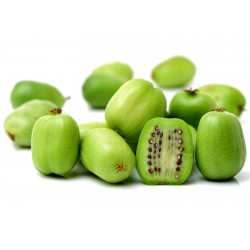
Hardy Kiwi seeds -34C...
Cena
1,50 €
SKU: V 28 H
Seeds Gallery Com,
5/
5
<meta http-equiv="Content-Type" content="text/html; charset=UTF-8" />
<h2><strong>Hardy Kiwi seeds -34C (actinidia arguta)</strong></h2>
<h2><span style="color: #ff0000;"><strong>Price for Package of 7 or 20 seeds.</strong></span></h2>
<p>Hardy kiwi is a deciduous woody vine that originates from eastern Asia. It is an attractive plant with dark green foliage and fragrant white flowers that appear in late spring but is primarily grown for its tart and sweet pale green fruits. Kiwi is dioecious, which means individual plants have either female flowers or male flowers. So, it is necessary to have at least two vines, one female and one male, for cross-pollination and fruiting.</p>
<p style="text-align: left;">For high productivity, plant these in locations with full sun and rich well-drained soil. Hardy kiwi must be trained on a strong trellis or fence. </p>
<div style="text-align: left;">
<table style="width: 612px;" border="1" cellspacing="0" cellpadding="0">
<tbody>
<tr>
<td colspan="2" valign="top" width="100%">
<p><span style="color: #008000;"><strong>Sowing Instructions</strong></span></p>
</td>
</tr>
<tr>
<td valign="top" nowrap="nowrap" width="24%">
<p><span style="color: #008000;"><strong>Propagation:</strong></span></p>
</td>
<td valign="top" width="75%">
<p><span style="color: #008000;">Seeds</span></p>
</td>
</tr>
<tr>
<td valign="top" nowrap="nowrap" width="24%">
<p><span style="color: #008000;"><strong>Pretreat:</strong></span></p>
</td>
<td valign="top" width="75%">
<p><span style="color: #008000;">0</span></p>
</td>
</tr>
<tr>
<td valign="top" nowrap="nowrap" width="24%">
<p><span style="color: #008000;"><strong>Stratification:</strong></span></p>
</td>
<td valign="top" width="75%">
<p><span style="color: #008000;">about 2-3 months in a moist substrate at 2-5 ° C refrigerator</span></p>
</td>
</tr>
<tr>
<td valign="top" nowrap="nowrap" width="24%">
<p><span style="color: #008000;"><strong>Sowing Time:</strong></span></p>
</td>
<td valign="top" width="75%">
<p><span style="color: #008000;">all year round> Autumn / Winter preferred</span></p>
</td>
</tr>
<tr>
<td valign="top" nowrap="nowrap" width="24%">
<p><span style="color: #008000;"><strong>Sowing Depth:</strong></span></p>
</td>
<td valign="top" width="75%">
<p><span style="color: #008000;">0,5 cm</span></p>
</td>
</tr>
<tr>
<td valign="top" nowrap="nowrap" width="24%">
<p><span style="color: #008000;"><strong>Sowing Mix:</strong></span></p>
</td>
<td valign="top" width="75%">
<p><span style="color: #008000;">Coir or sowing mix + sand or perlite</span></p>
</td>
</tr>
<tr>
<td valign="top" nowrap="nowrap" width="24%">
<p><span style="color: #008000;"><strong>Germination temperature:</strong></span></p>
</td>
<td valign="top" width="75%">
<p><span style="color: #008000;">10-15 ° C</span></p>
</td>
</tr>
<tr>
<td valign="top" nowrap="nowrap" width="24%">
<p><span style="color: #008000;"><strong>Location:</strong></span></p>
</td>
<td valign="top" width="75%">
<p><span style="color: #008000;">bright + keep constantly moist not wet</span></p>
</td>
</tr>
<tr>
<td valign="top" nowrap="nowrap" width="24%">
<p><span style="color: #008000;"><strong>Germination Time:</strong></span></p>
</td>
<td valign="top" width="75%">
<p><span style="color: #008000;">3-12 weeks</span></p>
</td>
</tr>
<tr>
<td valign="top" nowrap="nowrap" width="24%">
<p><span style="color: #008000;"><strong>Watering:</strong></span></p>
</td>
<td valign="top" width="75%">
<p><span style="color: #008000;">Water regularly during the growing season</span></p>
</td>
</tr>
<tr>
<td valign="top" nowrap="nowrap" width="24%">
<p><span style="color: #008000;"><strong> </strong></span></p>
</td>
<td valign="top" width="75%">
<p align="center"><span style="color: #008000;"><strong><em>Copyright © 2012</em></strong></span></p>
<p align="center"><span style="color: #008000;"><strong><em>Seeds Gallery - Saatgut Galerie - Galerija semena.</em></strong></span></p>
<p align="center"><span style="color: #008000;"><strong><em>All Rights Reserved.</em></strong><strong></strong></span></p>
</td>
</tr>
</tbody>
</table>
</div>
V 28 H (7 S)

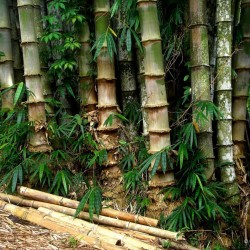
Male bamboo Seeds -...
Cena
1,50 €
SKU: B 3
Seeds Gallery Com,
5/
5
<h2><span style="font-size:14pt;"><strong>Male bamboo Seeds - Calcutta bamboo - Solid bamboo (Dendrocalamus strictus)</strong></span></h2>
<h2><span style="color:#ff0000;"><strong><span style="font-size:14pt;">Price for Package of 5 or 20 seeds.</span></strong></span></h2>
<div>Dendrocalamus strictus, also know as iron or male bamboo, calcutta bamboo or solid bamboo is a giant bamboo, which reaches a maximum height of 60 feet. Maximum diameter of the culms is around 5 inches. The lower parts of the culms are sometimes solid. Dendrocalamus strictus has small, light green, furry leaves. Its strong, lower erect, grey-green, slightly rough culms form a very tight packed clump. Dendrocalamus strictus is very drought tolerant once established. This is the only bamboo timber that once cured, can be nailed without cracking. Giant clumper, non-invasive. Supreme material in building furniture.</div>
<div>
<div>Plant in full sun or light shade.</div>
<div>Moso is somewhat more difficult to establish than are other bamboos.</div>
<div>Some claim that it is helpful to start with a large division.</div>
<div>Rhizome divisions are generally unsuccessful.</div>
<div>Moso has a strong preference for well-drained, red clay soils. As Landscape Ornamental Plant</div>
<div>Soak your seeds in about 85° F (30° C) water for 24 hours. Make sure it doesn’t get too hot, as temperatures over 105° F (40° C) can kill your seeds. Cooler temperatures however, will not hurt the seeds, but may delay germination by a few days.</div>
<div>5</div>
<div>Use a skewer or chopstick to open and rough up the top part of the peat pellets.</div>
<div>6</div>
<div>Put only one seed in the middle of each pellet. Because bamboo seeds are rare and expensive, you don't want to risk having two sprout in the same pellet and have to lose one of them.</div>
<div>7</div>
<div>Add a small amount of “seedling mix�? type potting soil over the top of your seeds. 1/8 to ¼ inch (2 to 5 mm) is enough.</div>
<div>8</div>
<div>Put the mini greenhouse in a location where it will get medium shade. An east-facing window is good if the weather outside is cold, or a moderately shady area outside if the weather is good. NOTE: Wherever you put it, it should not get too much direct sun. Even a mini greenhouse can quickly get up to seed killing temperatures in hot direct sun.</div>
<div>9</div>
<div>Check on the greenhouse daily, as the peat pellets can dry out quickly once the water from main soak evaporates. Before the seeds sprout, they can survive getting too dry once or so. But as soon as they sprout, they can die in a matter of hours if they dry out. If the peat pellets start getting too dry, use a spray bottle to dampen them again. You may need as much as a whole squirt per pellet to dampen to the interior of the pellet.</div>
<div>10</div>
<div>You may see a sprout within 10 days from planting, though the bulk of germination will occur after at least 15 or 20 days. Different species have different germination rates, so don’t get disappointed too soon.</div>
<div>11</div>
<div>If any of the sprouts get tall enough to touch the plastic dome lid while others are still getting started, prop the lid up as necessary to prevent the leaves from touching it… Any leaves resting against the lid will quickly rot and risk killing the seedling.</div>
<div>12</div>
<div>After about 30 days, most of the seeds that are going to sprout with this method will have done so. Transplant all of the healthy sprouts into 4�? (or half-liter) pots using the next few steps. But don’t discard the rest of the seeds yet, as we will jar a few more into action by changing the conditions for them.</div>
<div>13</div>
<div>Mix a good potting soil with about 50% small bark-chip mulch. This makes a potting mix with very high drainage that is good for bamboo.</div>
<div>14</div>
<div>Put a little (1/2 inch or 1 cm minimum) of this potting mix into the pots.</div>
<div>15</div>
<div>Move each pellet that has a sprout into a pot and fill around it so that the pellet is buried at least ¼ inch below the potting soil.</div>
<div>16</div>
<div>Give the pots a good dose of water. Because of the really good drainage, don’t worry too much about over watering.</div>
<div>17</div>
<div>Set these pots in an outdoor location that gets about 50% shade and that never gets full hot direct sun for more than a few minutes at a time. These seedlings are now well on their way. You will likely lose another 10% of them for no apparent reason at all, but the rest will have a good chance at making it to maturity.</div>
<div>18</div>
<div>Go back to the tray of remaining un-sprouted seeds and put the plastic lid aside. Store it for future use if you want, but these seeds and seedlings have no more use for it.</div>
<div>19</div>
<div>If your mini-greenhouse tray has a removable plastic liner that helps organize the pellets, take it out and make several drainage holes in the bottom of the unlined tray.</div>
<div>20</div>
<div>Put all of the pellets back in without the liner. Space them roughly evenly, and keep them the same side up as before… Seeds to the top.</div>
<div>21</div>
<div>Fill in around the pellets with seedling mix type potting soil, and mound it up to cover the top of the pellets by about ¼ inch (5mm).</div>
<div>22</div>
<div>Place this tray outside in the medium to full sun, checking it daily to keep it damp but not too wet. Because of removing the dome and the increased sun, expect to need to water nearly every day. It is probably helpful to switch to a regular watering can at this point, as you can give it a more normal dose of water.</div>
<div>23</div>
<div>Hopefully, you will see a whole new set of seedlings start to come up over the next few weeks. As these start to look ready, take them back to step 12 and get them transplanted.</div>
<div>Giant Bamboo Sowing instr.</div>
</div>
B 3 (5 S)





